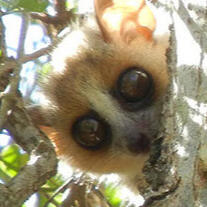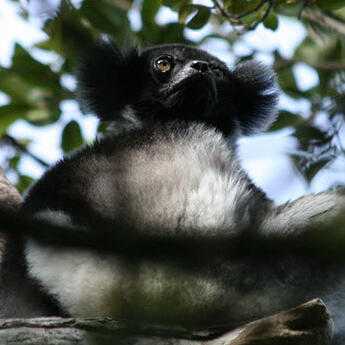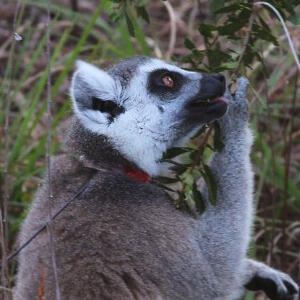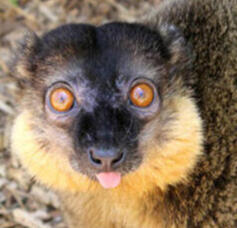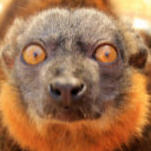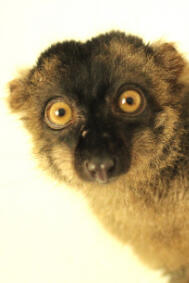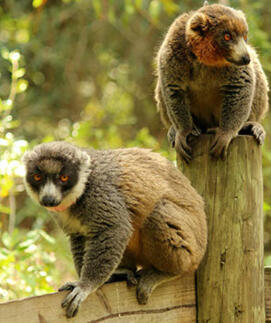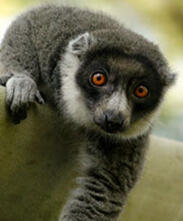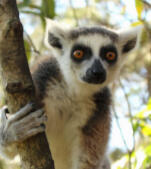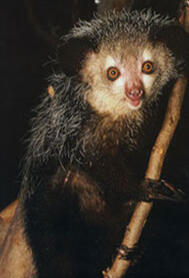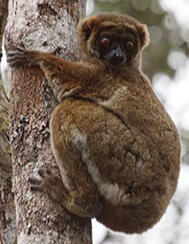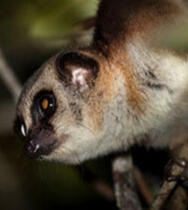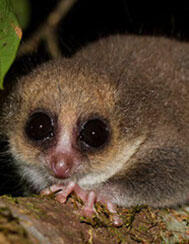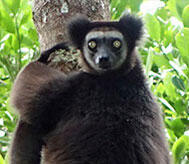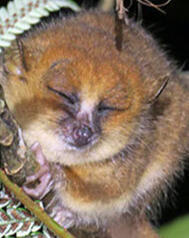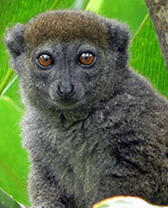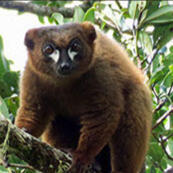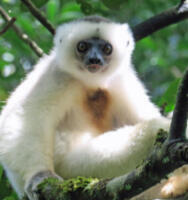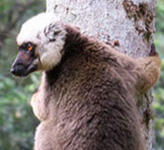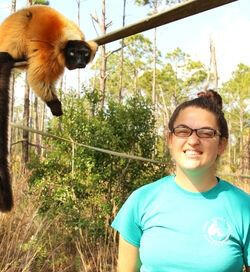Welcome to the World Lemur Festival 2023
Thank you for joining the Lemur Conservation Foundation to celebrate Lemur conservation.Please click the lemur Gif below to learn more about LCF, staff, lemurs on our reserve, and other lemur species!Please enjoy some background Music by Julius H. from Pixabay as you learn more about lemurs by pressing the play button!For optimal viewing, please view on computer
Music from: (https://pixabay.com/music/mystery-in-the-jungle-electronic-adventure-music-7659/)
Lemur Conservation Foundation
The Lemur Conservation Foundation is dedicated to the preservation and conservation of the primates of Madagascar through managed breeding, scientific research, education, and art.
Inspired by the work of Dr. Ian Tattersall and alarmed by lemurs’ spiraling decline, museum educator and artist Penelope Bodry-Sanders founded the nonprofit Lemur Conservation Foundation in 1996.The reserve’s initial 40 acres in Myakka City, FL were purchased in 1997. The first forested lemur enclosure was built, followed by an office and research center. Lemurs began arriving soon after. Today, the reserve is 130 acres and has a thriving colony of 54 lemurs.Other successful programs include field schools for college students and conservationists, internships, and the publication of a series of children’s books in Malagasy and English which formed the cornerstone of LCF’s conservation education programs in the United States and Madagascar.In Madagascar, LCF funded a new museum and interpretive center and opened a field office. Today, LCF maintains a full-time staff in Madagascar which oversees multiple programs to protect lemurs and the rainforest.In its first decade, LCF passed rigorous inspection to earn certification by the Association of Zoos and Aquariums (AZA) as a certified related facility; it has maintained that distinction ever since.

LEMURS
Lemurs are prosimians, a type of primate. They are native only to Madagascar and some small neighboring islands. There are more than 110 lemur species, 98% of which are threatened with extinction!Please click the arrows to learn more about the lemurs on the reserve as well as other lemur species!

Collared Brown Lemur
Eulemur collaris
AKA the red-collared (brown) lemur
Family: LemuridaeDID YOU KNOW?The Collared Brown Lemur weighs in at 2.25 to 2.5 kilograms (5 to 5.5 pounds) and their “balancing tails” are longer than their bodies!
They inhabit tropical moist lowland and montane forests in southeastern Madagascar.FUN FACT
Collared lemurs eat mostly fruit, which makes up 71% of their diet in the wild.
Common Brown Lemur
Eulemur fulvus
Family: LemuridaeDID YOU KNOW?Unique among Eulemur species, common brown males and females share the same coloring—grayish brown with a blackish face and orange-red eyes.FUN FACTThey consume more than 100 species of plants foods, though 15 comprise the bulk of the diet. Nutritional analyses have revealed high levels of tannins and alkaloids.
Mongoose Lemur
Eulemur mongoz
Family: LemuridaeDID YOU KNOW?As cathemeral animals, they travel, feed, and socialize both night and day, becoming more diurnal in the warm, wet season and nocturnal in the dry.FUN FACTLCF continues to manage one of the most successful breeding programs for mongoose lemurs in the United States which contributes to the genetic diversity of the species and helps provide a safety net against extinction.
Red Ruffed Lemur
Varecia rubra
Family: LemuridaeDID YOU KNOW?Red ruffed lemurs take their name from their plush chestnut- or orange-red coat, all the more striking because of their black face, tail, chest, and inner arms and legs.FUN FACTRed ruffed lemurs love fruit, which makes up 75-95% of their diet. They are the most frugivorous (fruit eating) of all lemurs.
Ring-tailed Lemur
Lemur catta
Family: LemuridaeDID YOU KNOW?Ring-tailed lemurs communicate through vocalizations (over 20 call types) and scent-marking.Ring-tailed lemurs have a diverse diet although they are especially fond of the fruit and leaves of the tamarind tree.FUN FACTThey usually feed and sleep in the forest canopy but spend the majority of their time on the ground as this species is the most terrestrial of all the lemurs.
Aye-aye
Daubentonia madagascariensis
Family: DaubentoniidaeDID YOU KNOW?The aye-aye weighs about 2.5 kg (or 5.5 lbs) and is arguably the most distinct of all lemurs.They have long, thin digits which are often described as skeletal in appearance, especially the third finger of the hand.FUN FACT
Unlike other lemurs, aye-ayes do not seem to have a distinct breeding season but instead give birth throughout the year.
Eastern Woolly Lemur
Avahi laniger
Family: IndriidaeDID YOU KNOW?They are named for the curly, dense fur on their backs which has a woolly appearance and varies in color from gray-brown to reddish.They cling vertically to trees and have very strong legs for leaping.FUN FACTEastern woolly lemurs sleep together in huddles of up to five individuals 2 to 9 meters off the ground in the forks of the trees below the canopy.Occasionally they may also rest or sleep near to the ground in clumps of dense undergrowth.
Greater Dwarf Lemur
Cheirogaleus major
Family: CheirogaleidaeDID YOU KNOW?The Greater dwarf lemur makes soft calls to locate others.They are also found in northern parts of Madagascar, in forests and dry scrub areas.FUN FACTThey move along horizontal branches with a regular gait pattern involving all four limbs.They generally give birth to twins.
Hairy-eared Dwarf Lemur
Allocebus trichotis
Family: CheirogaleidaeDID YOU KNOW?They exhibit an extraordinarily long tongue compared to other dwarf lemurs.The hairy-eared dwarf lemur is likely to be critically endangered and the population is estimated anywhere from 100–1000 individuals.FUN FACTIn the wild, up to 4 juveniles have reportedly been found in one tree hole.The lemurs also have been observed eating while hanging upside down on a branch.
Indri
Indri indri
AKA the babakoto
Family: IndriidaeDID YOU KNOW?This species is one of the largest living lemurs, with a head-body length of about 64–72 cm (25–28+1⁄2 in) and a weight of between 6 and 9.5 kg (13 and 21 lb).They are diurnal tree-dwellers related to the sifakas and, like all lemurs, they are native to Madagascar.FUN FACTThe indri practices long-term monogamy, seeking a new partner only after the death of a mate.The indri makes loud, distinctive songs, which can last from 45 seconds to more than 3 minutes.
Mittermeier’s Mouse Lemur
Microcebus mittermeieri
Family: CheirogaleidaeDID YOU KNOW?This species of mouse lemur is known only from Anjanaharibe-Sud Special Reserve in Madagascar.Like all other cheirogaleids, the Mittermeier's mouse lemur is endemic to Madagascar.FUN FACTMittermeier's mouse lemur is one of the smallest mouse lemurs, but is larger than Madame Berthe's mouse lemur, the smallest member of not only cheirogaleid family, but of all Primates.
Northern Bamboo Lemur
Hapalemur occidentalis
Family: IndriidaeDID YOU KNOW?
They are one of the more flexible lemur species and also exist in some secondary disturbed forests as well the fringes of cacao plantations and other agricultural land.They're almost always associated with stands of bamboo or bamboo vines.FUN FACTNorthern bamboo lemurs are the smallest lemur active during the day.Researchers have also observed after-dark activity and vocalizations indicating that this is a cathemeral species, active in the night and day.
Red-bellied Lemur
Eulemur rubriventer
AKA the red-collared (brown) lemur
Family: LemuridaeDID YOU KNOW?Red-bellied lemurs are a medium-sized primate and weigh about 3½ to 5 lbs.They are a sexually dichromatic species: males and females differ in their pelage coloration although not in overall body size.FUN FACTThe majority of their diet consists of fruit, flowers, nectar, and leaves. They are known to eat a large variety of plants—over 70 different species.Group travel is often led by the adult female.
Seal’s Sportive Lemur
Lepilemur seali
Family: LepilemuridaeDID YOU KNOW?Seal’s sportive lemurs are small primates that only weigh about 2 lbs. Their head and bodies are approximately 10 inches long, but their total size doubles to about 20 inches when including their tail.They can be found living in northeastern Madagascar.FUN FACT
They are the smallest folivorous lemur, meaning leaves make up the bulk of their diet.They are also nocturnal.
Silky Sifaka
Propithecus candidus
Family: IndriidaeDID YOU KNOW?Although all infants are born with black skin, all individuals lose pigmentation to varying degrees as they get older, resulting in skin color which is a mix of pink and black, with some individuals having all pink or all black faces.FUN FACTThey prefer higher elevations and are seldom found below 650 meters of altitude.They are arboreal spending almost all their time in the trees and only active during the day (diurnal).
White-fronted Brown Lemur
Eulemur albifrons
Family: LemuridaeDID YOU KNOW?This species can be found in tropical moist lowland and montane rain forest in northeastern Madagascar.The lemurs of this species are largely fruit-eaters (and seed dispersers), but also frequently eat leaves, flowers, and bark.FUN FACTThey generally locomote quadrupedally, with all four limbs.They are prone to leap frequently when traveling, especially when agitated.
Our Keeper Staff
We have a lot of love for our small, hard-working keeper staff and the dedication they provide to the lemurs on the reserve!Please click the arrows to learn more about our keeper staff


